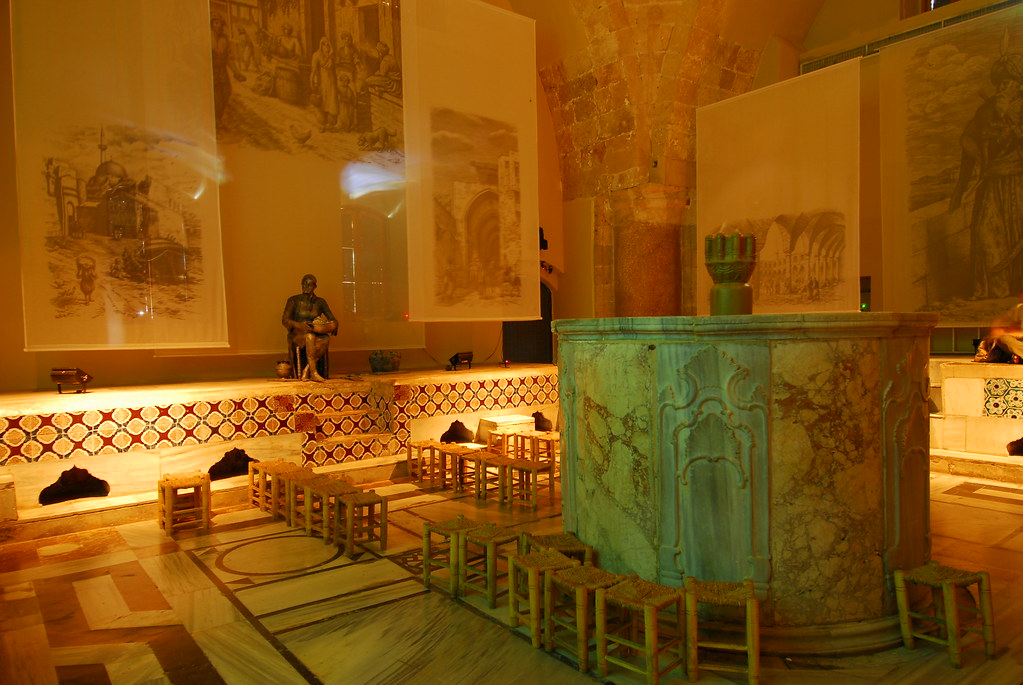The Origin of the Turkish bath -Hammam- start with its word “hammam” which comes from the Arabic word for the hammam, meaning bath, and the Hebrew word for the hammam, which means hot.
Turkish bath -hammam- started taking on a new character for fun and relaxation, as these places are always a good attraction for foreign tourists for entertainment. According to the statistics conducted on foreign tourists, hotels and tourist villages in which such hammams are located, attract the interest of tourists very much, and during a period of time The number of hammams exceeds fourteen thousand, and there were only 155 of them for the general public, which is called the market hammam, and the rest were for the sultans and princes, and they were located in their palaces, such as the Sulaymaniyah hammam.
Turkish hammams in the era of Ottomans
The most famous cities of the Turkish hammams are Istanbul ; which is one of the most important installations in the Ottoman style . There are also the ancient Roman hammams, including the Roman hammam, which dates back to 525 AD, and is located in Bursa, which was reserved for the Roman Emperor “Theodor”, Another hammam was for Sultan Suleiman the Magnificent, who is famous for its sulfuric water, which cures many diseases, including rheumatism.
Most of these Turkish hammams share roughly the same design so that the thermal planetarium is in the center of eight huge columns; made of alabaster, and the duration of the Turkish hammam ranges from one to two hours, and the hammam is not limited to cleaning the body, but rather is a place for relaxation, where the rest section provides a special atmosphere, by serving cold and hot drinks, and guests enjoy singing, to the melodies of the oud and drum, during the massage process, and the hammam process begins, by lying on the hot marble, so that the body perspires and throws all the toxic substances, and during that the skin has become soft and can be kneaded and a massage.
Turkish hammams culture
Turkey had a Turkish bathing culture in the pre-Islamic period. Traces of Islam began in architecture as everywhere after the acceptance of Islam. There are many similarities between Turkish architecture and mosque architectural hammams. The dome of the mosques and the dome of the Turkish hammams have the same architectural characteristics.
Turkish and Islamic hammams common cultural value
Turkish hammams meet the needs in two ways. Natural hot water and an artificial water system. Turkish hammams, which are placed on natural hot water, are thermal springs that are usually used for the purpose of health. Natural hot water cures physical disorders and skin diseases.
Turkish hammams, which have been present for more than a thousand years in Turkish culture, create a system for recognizing the different purposes of uses and positive effects on the human body. This system continues to this day. Turkish hammams are important places for entertainment, childbirth, and marriage in addition to cleaning.
There are foam massages, hammam gloves, hot and cold pools, algae, mud, and massages; all of them are with herbal oils in Turkish hammams.
Turkish bath -Hammam- and its benefits for human health
- Reduces stress
- Healing pain in muscles
- Speed up the bloodstream
- Skin looks healthy and young
- Steam treatment is for infectious diseases. Steam is useful for infections and cancers.
- The toxins leave the body through sweating thanks to the high temperature.
Conditions for Turkish hammams
Turkish hammams are very helpful in respecting social, cultural and health aspects. There are some terms that occurred in Turkish hammams. Here are the conditions:
- Tellak: The male individuals who help men with washing and getting scrub
- Natır: the female staff who help women with washing and getting scrubbing
- Peştamal: the delicate clothing to cover oneself.
- Takunya: Slippers worn in Turkish hammams.

